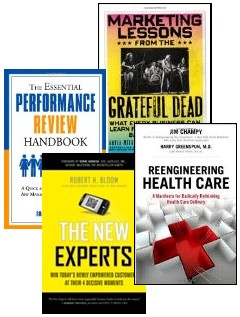Leadership Inspirations – Inspire Others

John Quincy Adams (1767 – 1848)
6th President of the United States

John Quincy Adams (1767 – 1848)
6th President of the United States
Even if you do not have an actual figure, most business leaders realize that there is a substantial cost to employee turnover. This series of articles will address relational leadership methods you can employ right now that will tip the turnover scale to your favor.
|
You do not want to stop turnover; you want to control it. Not all your hires will perform as you hope and some people will just naturally burn out. How can you mitigate these circumstances?
Today’s article will address creating a ‘learning – thinking’ organization. I will share a few key thoughts to get you started.
Low turnover and effective recruiting go hand in hand. Your business environment and culture bear heavily upon your ability to attract and retain the best people. The following are some of the significant success factors in building a winning environment. Your people:
It’s a great compliment to invest time and money in an individual’s development. A learning – thinking organization will have development plans for the company and personal plans for individuals (based on their strengths) that increase their capacity. The following is an example to improve organizational needs:
|
Strength Inventory – Sports Stars, Inc. |
||||
| Individual | Strengths | |||
| Ted Williams | Technical* | Disciplined | Analytical | |
| Larry Bird | Competitive | Doer | Adaptable | |
| Bobby Orr | Self-Assured | Developer | Energized* | |
| Tom Brady | Strategic | Communicator | Deliberate | |
| Organization | Strengths | |||
| Sports Stars, Inc. | Blend of Experience* (range of people with different times on job) |
Market Share* | Location | |
* Top 4 Strengths to be used in needs analysis and improvement
Table 1: Strength Inventory Example
In the example below, the organizational needs appear at the top of each column. For illustration there are two strengths from both the organization and the individual. I assigned them to the needs as appropriate. The teams assembled by strength concentrate on improving the need assigned. You will need multiple teams from each strength area. People representing the organizational strengths are selected ‘at large’ and have demonstrated an impact on that strength in their daily work.
Figure 1: Organizational Need to Individual Strength Alignment
The matrix that you have created becomes the key to a functioning thinking – learning organization. It will help you arrive at effective strategic decisions thus maximizing success in your company. The concept of building on strengths is a powerful motivator. People like to do things they do well. By helping them to do them even better, it makes sense that they will begin to contribute to the whole at a much higher level. Also, they will feel a personal commitment to the growth of the business, because it becomes a part of who they are.
A learning structure built on these principles will give you the opportunity to celebrate the contributions of people throughout the organization. You will also create multiple opportunities for meaningful shared experiences resulting in a bond that will give cohesion and a shared will to succeed. Finally, it becomes abundantly clear that leadership is committed, first and foremost to its people.
People in organizations like this do not leave. People who find organizations like this want to get in. This is one example of relational leadership at work; there are many more.
About the Author

(Course Technology PTR, Cengage Learning 2010). During his 36 year career, Frank has worked with many of the most recognized companies and executives in the world. He has provided consulting services for peers across the country and helped initiate Junior Achievement programs in Ireland, the Ivory Coast, Oman, the United Arab Emirates, Bahrain, and Uzbekistan. Frank was inducted into the Delaware Business Leaders Hall of Fame in October 2008, one of 38 individuals so honored and the first not-for-profit executive to receive this distinction in Delaware’s 300 year business history. To read Frank’s complete biography, click here.
For more information regarding this subject, visit Frank McIntosh at his website www.FJMcIntosh.com.
Not all analytics are created equal. Like most software solutions, you’ll find a range of capabilities with analytics, from the simplest to the most advanced. In the spectrum shown here, your competitive advantage increases with the degree of intelligence.
 |
1. STANDARD REPORTS Answer the questions: What happened? When did it happen? Example: Monthly or quarterly financial reports.We all know about these. They’re generated on a regular basis and describe just “what happened” in a particular area. They’re useful to some extent, but not for making long-term decisions. |
 |
2. AD HOC REPORTS Answer the questions: How many? How often? Where? Example: Custom reports that describe the number of hospital patients for every diagnosis code for each day of the week.At their best, ad hoc reports let you ask the questions and request a couple of custom reports to find the answers. |
 |
3. QUERY DRILLDOWN (OR OLAP) Answers the questions: Where exactly is the problem? How do I find the answers? Example: Sort and explore data about different types of cell phone users and their calling behaviors.Query drilldown allows for a little bit of discovery. OLAP lets you manipulate the data yourself to find out how many, what color and where. |
 |
4. ALERTS Answer the questions: When should I react? What actions are needed now? Example: Sales executives receive alerts when sales targets are falling behind.With alerts, you can learn when you have a problem and be notified when something similar happens again in the future. Alerts can appear via e-mail, RSS feeds or as red dials on a scorecard or dashboard. |
 |
5. STATISTICAL ANALYSIS Answers the questions: Why is this happening? What opportunities am I missing? Example: Banks can discover why an increasing number of customers are refinancing their homes.Here we can begin to run some complex analytics, like frequency models and regression analysis. We can begin to look at why things are happening using the stored data and then begin to answer questions based on the data. |
 |
6. FORECASTING Answers the questions: What if these trends continue? How much is needed? When will it be needed? Example: Retailers can predict how demand for individual products will vary from store to store.Forecasting is one of the hottest markets – and hottest analytical applications – right now. It applies everywhere. In particular, forecasting demand helps supply just enough inventory, so you don’t run out or have too much. |
 |
7. PREDICTIVE MODELING Answers the questions: What will happen next? How will it affect my business? Example: Hotels and casinos can predict which VIP customers will be more interested in particular vacation packages.If you have 10 million customers and want to do a marketing campaign, who’s most likely to respond? How do you segment that group? And how do you determine who’s most likely to leave your organization? Predictive modeling provides the answers. |
 |
8. OPTIMIZATION Answers the question: How do we do things better? What is the best decision for a complex problem? Example: Given business priorities, resource constraints and available technology, determine the best way to optimize your IT platform to satisfy the needs of every user.Optimization supports innovation. It takes your resources and needs into consideration and helps you find the best possible way to accomplish your goals. |
The best analytics for your business problem
The majority of analytic offerings available today fall into one of the first four areas, which report historical data on what happened in the past but no insight about the future. For simple business problems, these analytic solutions will be all you need. But if you’re asking more complex questions or looking for predictive insight, you need to look at the second half of the spectrum. Even better, if you can learn to use these technologies together and identify what type of analytics to use for every individual situation, you’ll really be increasing your chances for true business intelligence.
This article was republished with the permission of sascom Magazine.
| About SAS – Providing organizations with THE POWER TO KNOW® since 1976.
SAS is the leader in business analytics software and services, and the largest independent vendor in the business intelligence market. Through innovative solutions delivered within an integrated framework, SAS helps customers at more than 45,000 sites improve performance and deliver value by making better decisions faster. Since 1976, SAS has been giving customers around the world THE POWER TO KNOW®. To learn more about SAS, its products and services, visit www.sas.com. |
|
| About sascom Magazine
sascom Magazine is the quarterly publication of the SAS Institute, Inc. Each issue is packed with thought-provoking content and insight into the business issues that affect all companies competing in today’s technology-driven marketplace with recent contributions by best-selling author and researcher Tom Davenport; social media guru Chris Brogan; and Myron Scholes, world renowned economist and Nobel Prize winner. Subscribe now to get your subscription to this award-winning quarterly magazine. sascom Magazine can also be accessed online at www.sas.com/sascom. |

Albert Einstein
Awarded the 1921 Nobel Prize in Physics, named Time’s Man of the Century in 1999, and best known for his conception of the theories of special and general relativity
Organizations today seem to have a never ending supply of performance measures. Our data rich environment feeds the need of many managers to have all things counted. Yet as Albert Einstein suggests, not everything that can be counted matters. And just because something is counted doesn’t make it important. Thus, not everything that is measurable should be assigned its own performance indicator; rather only those things that are truly important, whether currently counted or not, should be measured. The identification of performance measures should therefore start with the identification of the key factors critical to the organization’s success.
Hi there! Gain access to this article with a StrategyDriven Insights Library – Total Access subscription or buy access to the article itself.
| Subscribe to the StrategyDriven Insights Library
Sign-up now for your StrategyDriven Insights Library – Total Access subscription for as low as $15 / month (paid annually). Not sure? Click here to learn more. |
Buy the Article
Don’t need a subscription? Buy access to Organizational Performance Measures Best Practice 13 – Identify the Measures First for just $2! |
Additional Information
The following StrategyDriven articles and whitepapers provide additional information on the identification of those performance measures important to the organization’s ongoing success:
Articles
StrategyDriven Podcast – Special Edition
Whitepaper
Resource – Book

In addition to the insightful articles and interviews of dozens of today’s most renowned executives and thought leaders, StrategyDriven Premium Members receive access to our expansive collection of:
These StrategyDriven products provide insight to the real-world application of strategic business planning and tactical execution best practices – a blending of practical workplace experience combined with sound research and academic principles. As such, a StrategyDriven Premium Membership provides you with access to the insights and experiences of exceptional business leaders without the expense associated with maintaining an MBA staff.
Be one of the first 25 to register for a monthly StrategyDriven Premium Membership and begin your journey to greater effectiveness and increased efficiency… with a complimentary copy of a StrategyDriven Guest Contributor’s book.
* Paid membership required. Available only to those living within the United States. Name and address information required. Books shown are illustrative. Actual book provided may differ. Books typically valued from $14.95 – $29.95 USD. Book value is not guaranteed. Subscriptions can be canceled at any time. Please note that Premium Member access will continue until the paid subscription expires.
